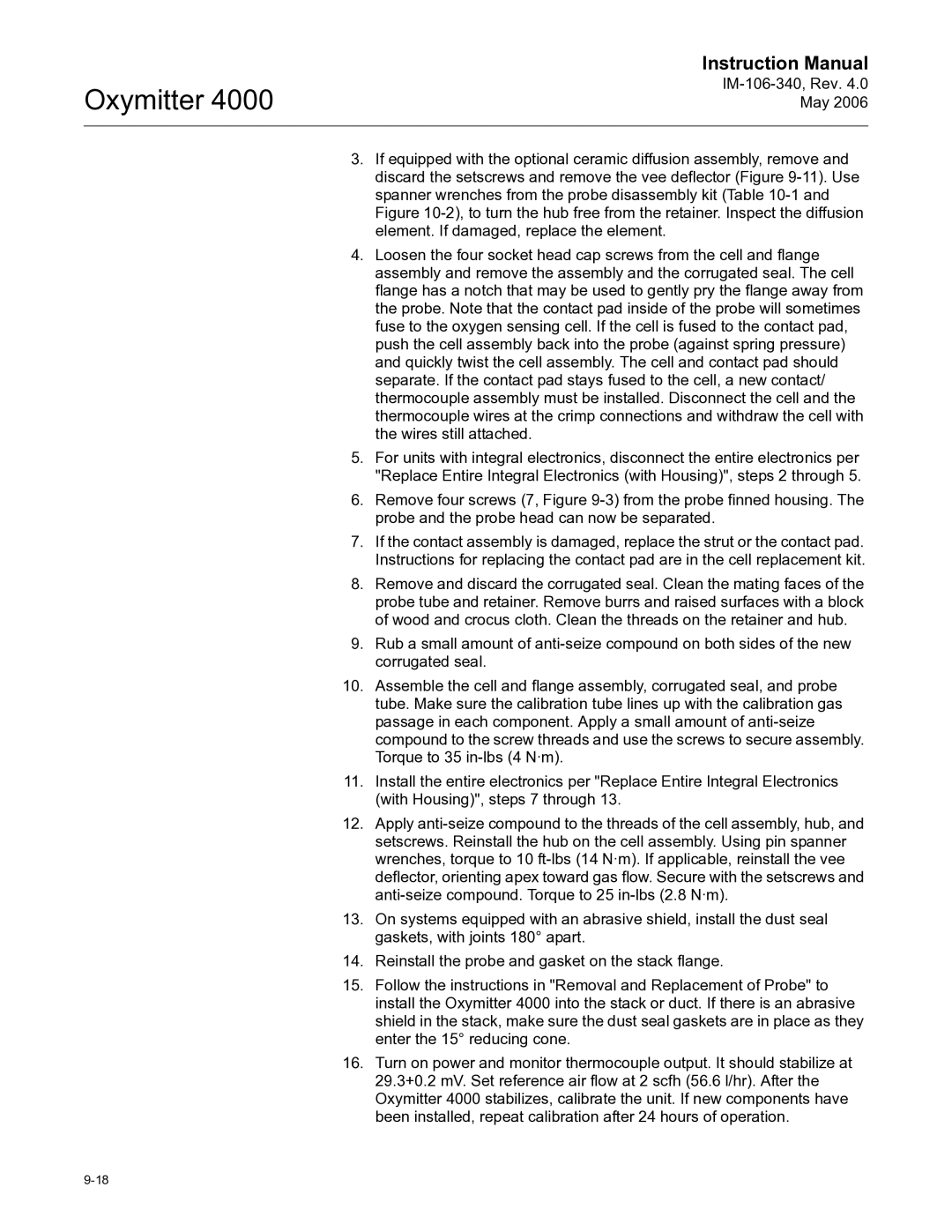Oxymitter 4000
Instruction Manual
3.If equipped with the optional ceramic diffusion assembly, remove and discard the setscrews and remove the vee deflector (Figure
4.Loosen the four socket head cap screws from the cell and flange assembly and remove the assembly and the corrugated seal. The cell flange has a notch that may be used to gently pry the flange away from the probe. Note that the contact pad inside of the probe will sometimes fuse to the oxygen sensing cell. If the cell is fused to the contact pad, push the cell assembly back into the probe (against spring pressure) and quickly twist the cell assembly. The cell and contact pad should separate. If the contact pad stays fused to the cell, a new contact/ thermocouple assembly must be installed. Disconnect the cell and the thermocouple wires at the crimp connections and withdraw the cell with the wires still attached.
5.For units with integral electronics, disconnect the entire electronics per "Replace Entire Integral Electronics (with Housing)", steps 2 through 5.
6.Remove four screws (7, Figure
7.If the contact assembly is damaged, replace the strut or the contact pad. Instructions for replacing the contact pad are in the cell replacement kit.
8.Remove and discard the corrugated seal. Clean the mating faces of the probe tube and retainer. Remove burrs and raised surfaces with a block of wood and crocus cloth. Clean the threads on the retainer and hub.
9.Rub a small amount of
10.Assemble the cell and flange assembly, corrugated seal, and probe tube. Make sure the calibration tube lines up with the calibration gas passage in each component. Apply a small amount of
11.Install the entire electronics per "Replace Entire Integral Electronics (with Housing)", steps 7 through 13.
12.Apply
13.On systems equipped with an abrasive shield, install the dust seal gaskets, with joints 180° apart.
14.Reinstall the probe and gasket on the stack flange.
15.Follow the instructions in "Removal and Replacement of Probe" to install the Oxymitter 4000 into the stack or duct. If there is an abrasive shield in the stack, make sure the dust seal gaskets are in place as they enter the 15° reducing cone.
16.Turn on power and monitor thermocouple output. It should stabilize at 29.3+0.2 mV. Set reference air flow at 2 scfh (56.6 l/hr). After the Oxymitter 4000 stabilizes, calibrate the unit. If new components have been installed, repeat calibration after 24 hours of operation.
